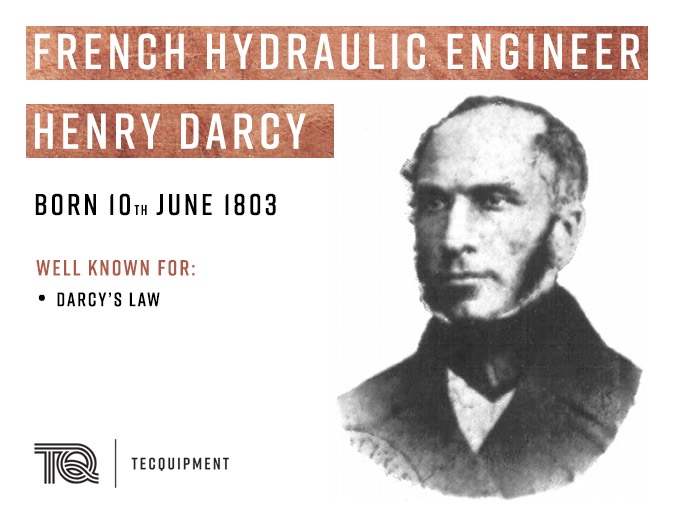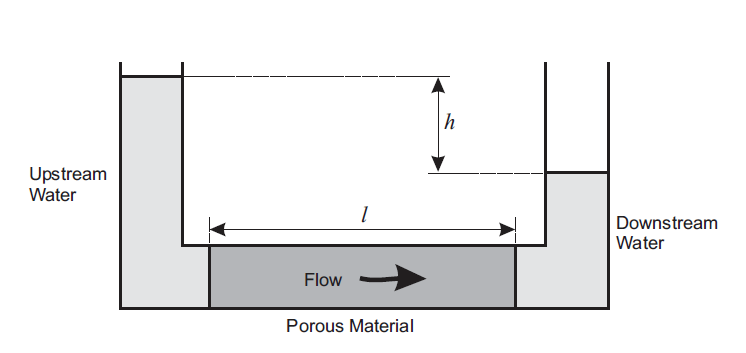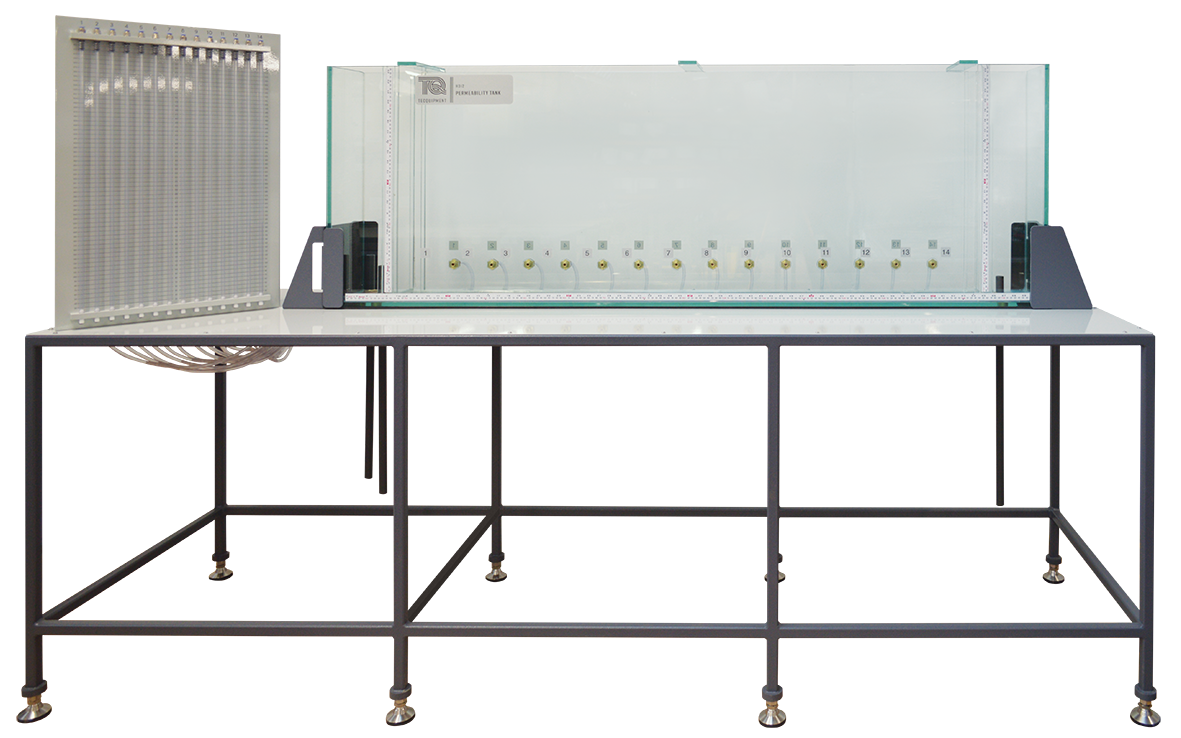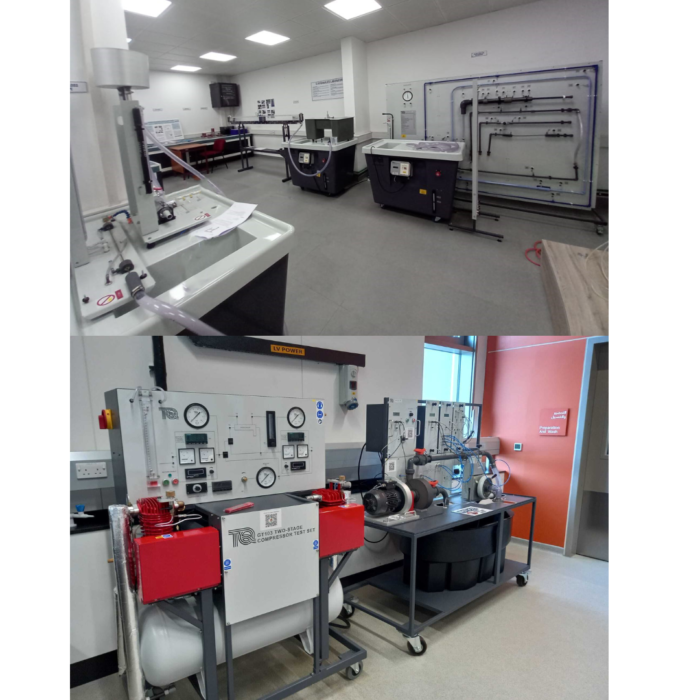
Life and Career of Darcy
This notable engineer, made significant contributions to hydraulics. At 18 he started out his formal education at École Polytechnique (Polytechnic School) in Paris, and then moved onto specialising in bridges and roads. During his time working on the civil engineering of water distribution in Dijon he observed and defined various phenomenon to understand the flow of water.
Darcy’s Law
While Darcy was working as Chief Director for Water and Pavements, he focused more of his time on hydraulics research. Later he went on to define Darcy’s Law. This was initially to describe flow through sands, but its now a more generalised unit of measure for fluid permeability – named in Darcy’s honour.
It shows the volumetric flow rate is a function of the flow area, elevation, fluid pressure and a proportionality constant.
Consider the flow of water through a section of porous material of length 'l' under a head 'h' as shown


Where:
Q is the volume of water passing through the porous medium per unit time, and
A is the cross sectional area of the porous media.
Therefore, q represents the equivalent velocity of water in a pipe of the same cross-sectional area as the porous medium.
The flow of water through a porous medium takes place along numerous irregularly shaped conduits between the soil particles. In order for the volume of water, Q, to be moved through the porous media in unit time, the actual (average) velocity of water flowing in these conduits, sometimes referred to as 'seepage velocity', V, has to be higher than q because the total cross sectional area of all the conduits is only a small proportion of the cross sectional area of the medium. Therefore V and q are related by the porosity:


Where porosity is defined as the proportion of voids in the porous medium's overall volume.
Darcy showed experimentally that q is directly proportional to i for a given soil (and fluid). The constant k in Equation 2 has units of mm.s-1, m.s-1 or m/day and is called the coefficient of permeability or sometimes, the coefficient of hydraulic conductivity.
It follows from Equation 2 that the seepage flow rate is given by Equation 4, where A is the total cross-sectional area of material through which the flow takes place and Q has units of mm3.s-1, m3.s-1 or m3/day.



Practical Applications of Darcy’s Law
- To test the theory and understand permeability of media, learn more about TecQuipment’s Permeability, Flow Nets and Darcy’s Law experiment.















